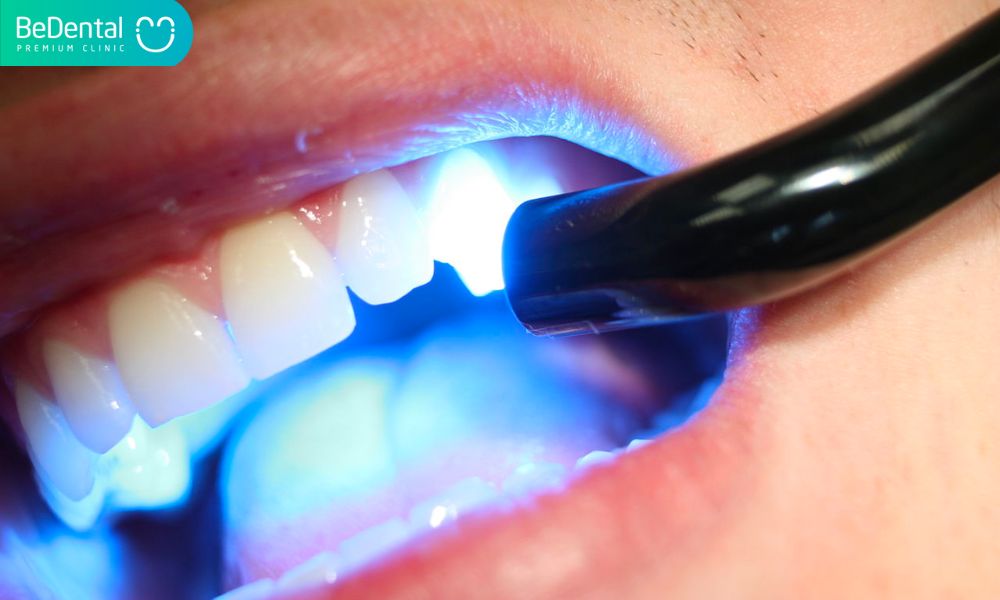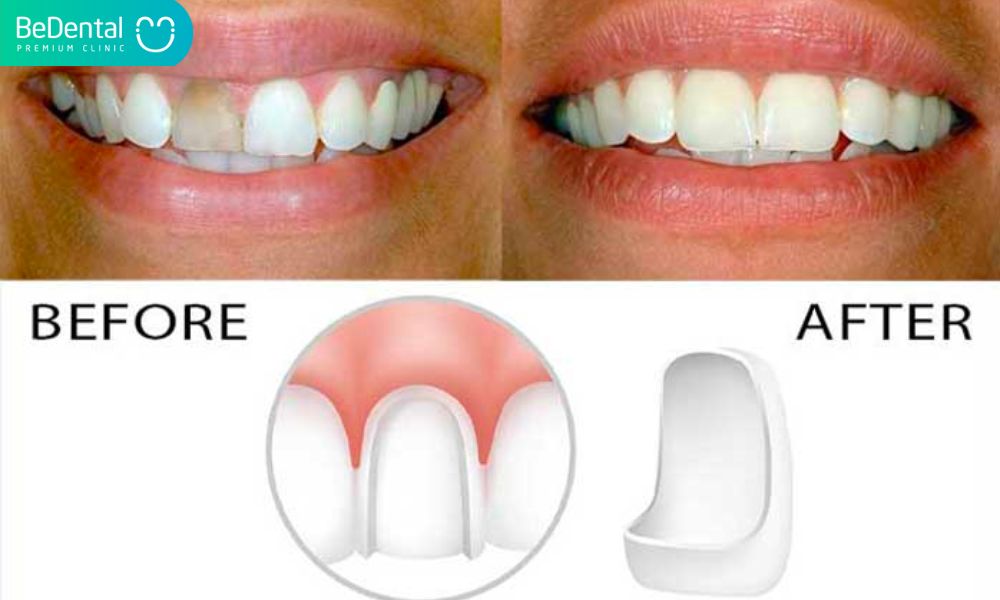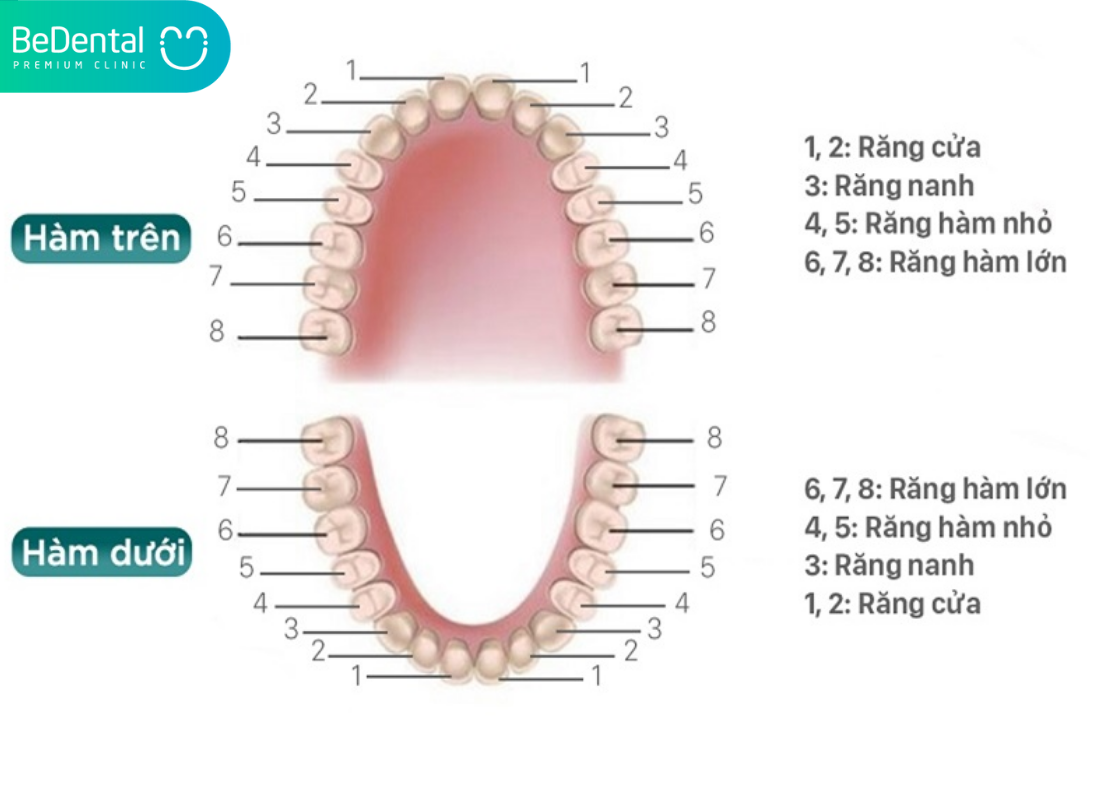Composite Veneers procedures may be the best option for you if you want to improve your smile and boost your confidence
What are composite veneers?
If you want to enhance your smile and gain more confidence, veneer methods may be the best choice for you.
Veneers are thin caps that adhere to the front of your natural teeth to have better visual effects. Veneers are just one of various methods to improve the appearance of your teeth.
There are 2 main types of veneers: composite veneers and porcelain veneers. While porcelain veneers are made of porcelain to fit your teeth, composite veneers are made from the same type of material as tooth bonding, tooth-colored resin.
Both types of veneers have advantages and disadvantages, so it’s crucial to consider your budget as well as the degree of the problem you’re trying to fix.
Who is a candidate?
Dental veneers can conceal flaws on your teeth and give you an even, stunning smile.
Imperfections can include crooked or misshapen teeth, stained or discolored teeth, or the loss of the enamel layer on your teeth.
Veneers just cover a visible portion of your teeth, unlike crowns, which are thicker and restore the whole tooth from the front to the back. In addition, veneers may or may not require more dental preparation than crowns do.

Veneers can be an excellent option if you only want to modify the form or color of your teeth and they are in generally good condition.
Crowns often protect teeth against severe damages. A crown can also be a preferable option, if you need a root canal or have a cracked tooth.
Types of veneers
A dentist usually recommends 3 types of veneers: direct composite veneers, indirect composite veneers, and porcelain veneers.
- Direct composite veneers
Veneers composed of composite resin that are put directly to your teeth are known as direct composite veneers.
A dentist can quickly prepare your teeth for veneer treatment, and the process is apparently less painful.
- Indirect composite veneers
The main difference between direct and indirect composite veneers is in how they are applied, not in the materials themselves.
Although the veneers are created precisely “outside the mouth” at a dental laboratory or at your dentist’s office, your teeth are prepared similarly to how they would be for direct composite veneers.
Until the indirect veneers are done, you will be given a set of temporary veneers. The indirect composite veneers are placed on your teeth with a film of glue at the next visit.
Indirect composite veneers can withstand more abrasions and resist fractures better than the direct version. They tend to cost more than direct composite veneers, however.
- Porcelain veneers
Porcelain veneers are customized to fit a patient’s teeth. A dentist will take impressions of your teeth so that the dental lab can create the veneers from the mold, and it takes a week or longer.
The dentist will mold the thin porcelain shells to seem as natural as possible and bond them to the front of your teeth when they are prepared.

Composite veneers vs. porcelain veneers
Both varieties of veneers have advantages and disadvantages. The benefits and drawbacks should be thoroughly considered before you make your decision.
Pros: Composite veneers
- affordable
- process takes shorter if direct veneers
- can conceal cosmetic issues, like as chipped teeth, stains and other flaws
Cons: Composite veneers
- substance is more fragile than porcelain and prone to chipping
- need to be replaced or repaired more frequently than porcelain veneers
Pros: Porcelain veneers
- longer lasting because of stronger material
- custom made
- more natural look
- may repair teeth that are more severely discolored or misaligned than composite veneers.
Cons: Porcelain veneers
- the most costly type of veneers
- the placement procedure takes more than one visit
- possibly fall off and need to be re-glued
Composite veneers procedure
Your dentist will begin the procedure by cleaning your teeth entirely and prepping them for the placement.
To help the substance adhere to your teeth, the dentist will remove a thin layer of enamel. Your teeth may not always need to be trimmed if just minor form or color improvements are required.
Then the process will vary depending on whether you’re getting direct or indirect veneers.
The dentist will etch a minor amount of enamel to help attach and insert direct veneers on the front of the teeth.
The composite resin material will then be attached to your teeth using an adhesive glue, which will be applied next. Finally, the surface of your teeth are covered with ultra thin layers of the composite material.
The light is to fasten the hardening process of the composite resin layer if needed.

The tone or color of your veneers can be chosen by both you and your dentist. To make your veneers seem natural, your dentist might combine several hues of composite resin.
The dentist will take a mold of your teeth for indirect veneers after preparing your teeth.
Outside of your mouth, veneers are intended for indirect restorations. Your teeth will first be etched by the dentist, who will then prepare them for indirect veneer placement by applying a kind of adhesive material. This adhesive or bonding substance will help the veneers stay in place.
The composite veneers will subsequently be applied to your teeth. Before the veneers are bonded to the teeth, the adhesive will be toughened with a light. Next, the dentist will polish everything and remove any protruding edges.
Many people may undergo the procedure without needing anesthetic. But if you do, you should be able to go back to work or other regular activities without any problems when the anesthetic wears off.
How long do composite veneers last?
Nowadays, composite veneers are considered to be more durable than they used to be. On average, they can survive 5 to 7 years.
You’ll then need a new set of veneers. A set of porcelain veneers may last at least 10 or 15 years, which is a much longer lifespan.
Regular oral hygiene is the best way to extend the lifespan of your composite veneers.
Adopt a regular habit of cleaning your teeth with a nonabrasive toothpaste, and avoid putting hard pressure on your teeth or eating cold food.
Some dentists advise you to avoid consuming caffeine-containing drinks that might stain your veneers.
Composite veneers before and after


Composite veneers cost
You should think about the cost as well. Veneers are not affordable.
One thing that takes time when applying veneers is the application procedure itself. Another reason is that you desire long-lasting materials and workmanship. After all, as soon as you speak, everyone will be able to witness the outcome.
Composite veneers might still be expensive even though they are less costly than porcelain veneers.
The price of composite veneers will depend on where you get this treatment and how many veneers you want to.
Since insurance frequently doesn’t cover cosmetic dental operations, you’ll likely have to pay the whole cost if all you’re looking to do is improve the beauty of your smile.
But if your tooth is damaged, your insurance could pay some or all of the bill.
If not, talk to a dentist about creating a payment plan if the expense is an issue. For having a set amount of veneers done all at once, you can even receive a discount.
Here is BeDental’s price list for veneer
| NO. | CATEGORIZES | PRICE
(VND) |
||
| Giá Sứ kim loại (Tìm hiểu thêm…) Porcelain teeth backed with metal |
||||
| PH08 | Giá Răng sứ kim loại thường (Ni,Cr)
Porcelain teeth backed with metal (Ni,Cr) |
1.000.000 | ||
| PH09 | Giá Răng sứ kim loại Vivadent france (Cr,Co)
Porcelain teeth backed with metal Vivadent France (Cr,Co) |
1.200.000 | ||
| PH10 | Giá Răng sứ kim loại Jelenko USA ( Cr, Co)
Porcelain teeth backed with metal Jelenko USD (Cr,Co) |
1.500.000 | ||
| PH11 | Giá Răng sứ kim loại titan
Porcelain teeth backed with titanium |
2.500.000 | ||
| Giá Sứ không kim loại : (Tìm hiểu thêm)
Non-metal Teeth |
||||
| PH20 | Giá Răng sứ Katana (bảo hành 7 năm)
Porcelain Veneer Katana from Japan |
2.900.000 | ||
| PH19 | Giá Răng sứ Venus ( bảo hành 7 năm) (Tìm hiểu thêm…)
Porcelain Veneer Venus from Germany (More detail…) |
3.500.000 | ||
| PH12 | Giá Răng sứ Roland ( bảo hành 10 năm) (Tìm hiểu thêm…)
Porcelain Veneer Roland from Germany (More detail…) |
4.500.000 | ||
| PH13 | Giá Răng sứ Roland HD (bảo hành 10 năm) (Tìm hiểu thêm…)
Porcelain Veneer Roland HD from Germany |
5.500.000 | ||
| PH14 | Giá Răng sứ Ceramill (bảo hành 10 năm)(Tìm hiểu thêm…)
Porcelain Veneer Ceramil from Germany |
6.000.000 | ||
| PH15 | Giá Răng sứ Emax Nanoceramics ( bảo hành 15 năm)
Porcelain Veneer Emax from Germany |
7.000.000 | ||
| PH13-1 | Giá Răng sứ HTsmile (Bảo hành 15 năm) (Tìm hiểu thêm…)
Porcelain Veneer Htsmile from Germany (More detail…) |
7.000.000 | ||
| PH15-1 | Giá Răng sứ Emax* Press Lithium Disilicate (Bảo hành 15 năm) (Tìm hiểu thêm…)
Porcelain Veneer Emax press from Germany (More detail…) |
8.000.000 | ||
| PH15-2 | Giá Răng sứ Cercon (Bảo hành 15 năm) (Tìm hiểu thêm…)
Porcelain Veneer Cercon from Germany (More detail…) |
7.000.000 | ||
| PH16 | Giá Răng sứ Nacera Pearl Shade ( bảo hành 10 năm)
Porcelain Veneer Nacera from Germany |
7.000.000 | ||
| PH17 | Giá Răng sứ Lava 3M Premium Plus ( bảo hành 15 năm) (Tìm hiểu thêm…)
Porcelain Veneer Lava 3M Plus from USA (More detail…) |
8.000.000 | ||
| PH21 | Giá Răng sứ Lava Esthentics ( bảo hành 15 năm)
Porcelain Veneer 3M Lava Esthetic from USA |
11.000.000 | ||
| PH22 | Giá Răng sứ Lisi Press (bảo hành 15 năm) (Tìm hiểu thêm…)
Porcelain Veneer Lisi from Japan (More detail…) |
11.000.000 | ||
| PH18 | Giá Răng sứ kim cương (Bảo hành trọn đời)
Porcelain Veneer Diamond from USA |
16.000.000 |
Takeaway
Dental veneers could be a perfect option for you if you’ve started to feel self-conscious about your smile. They are mainly a temporary fix for misaligned teeth.
Because veneers, especially composite ones, may be pricey, carefully consider your alternatives and the advantages and disadvantages of each before making a choice. Consult a dentist for advice on the best option as well.
Q&A
Is composite veneer good for teeth?
Composite veneers are safe since the resin in composite is harmless and won’t hurt you. They require less intervention than porcelain since your dentist may apply the resin to the tooth surface without drilling any holes in the teeth.
Which is better: veneers or composite?
Porcelain veneers can last 10-15 years if you have good oral care. Conversely, composite veneers generally last 4 to 8 years. Despite its fragility, porcelain is fairly strong once it is bonded to a sound tooth. Composite is tough and scratch-resistant, however it is not as strong as porcelain.
Do composite veneers stay white?
Your veneer can remain beautiful, white, and healthy for a very long time if you practice proper oral care, brush and floss your teeth frequently, and see the dentist as instructed. Dental veneers might last up to 20 years if you take care of them properly.
Are composite veneers painful?
Getting veneers often causes little discomfort throughout the treatment. However, some patients have mentioned feeling a little irritated after the final fitting, which is completely normal and of no concern. It typically only lasts a few days when subsidies are in place throughout the recovery.
Do composite veneers change your face?
Your teeth might change in several ways thanks to veneers. They really alter the structure of your face. Your mouth loses its suppleness and muscle tone as you age, which causes your face to become less symmetrical. Veneers make you seem younger by emphasizing your cheekbones and enhancing the muscles in your mouth.
Do composite veneers look natural?
Veneers may definitely seem natural and fit your smile when properly applied, giving you an even, gorgeous appearance. With veneers, you may improve your look while keeping your original tooth structure, providing you a stable repair option for your smile.
Do composite veneers fall off easily?
No, is the response. Unlike porcelain veneers, composite veneers do not crack as easily or in the same way. The most frequent causes of composite veneer chipping include biting and chewing on hard food or clenching and grinding the teeth.
How long do composite veneers last?
Composite veneers have a relatively shorter lifespan. They are far less durable than other veneers, with an average lifespan of only three years. Composite veneers are more likely to get discolored over time. The material is also naturally less resilient than other materials.
Can composite veneers be removed?
Composite veneers are likely to be removed and mended or replaced by adding new composite material.
More
Porcelain Veneers and 3 factors influence the price of Porcelain Veneers
Tooth extraction and 7 common concerns
Scaling and Polishing – Deep Oral Cleaning and 5 Habits To Keep Teeth Healthy






Pingback: Pink eye and 3 main causes – Be Dental
Pingback: Tooth Fillings and 3 Problems with Tooth Fillings – Be Dental